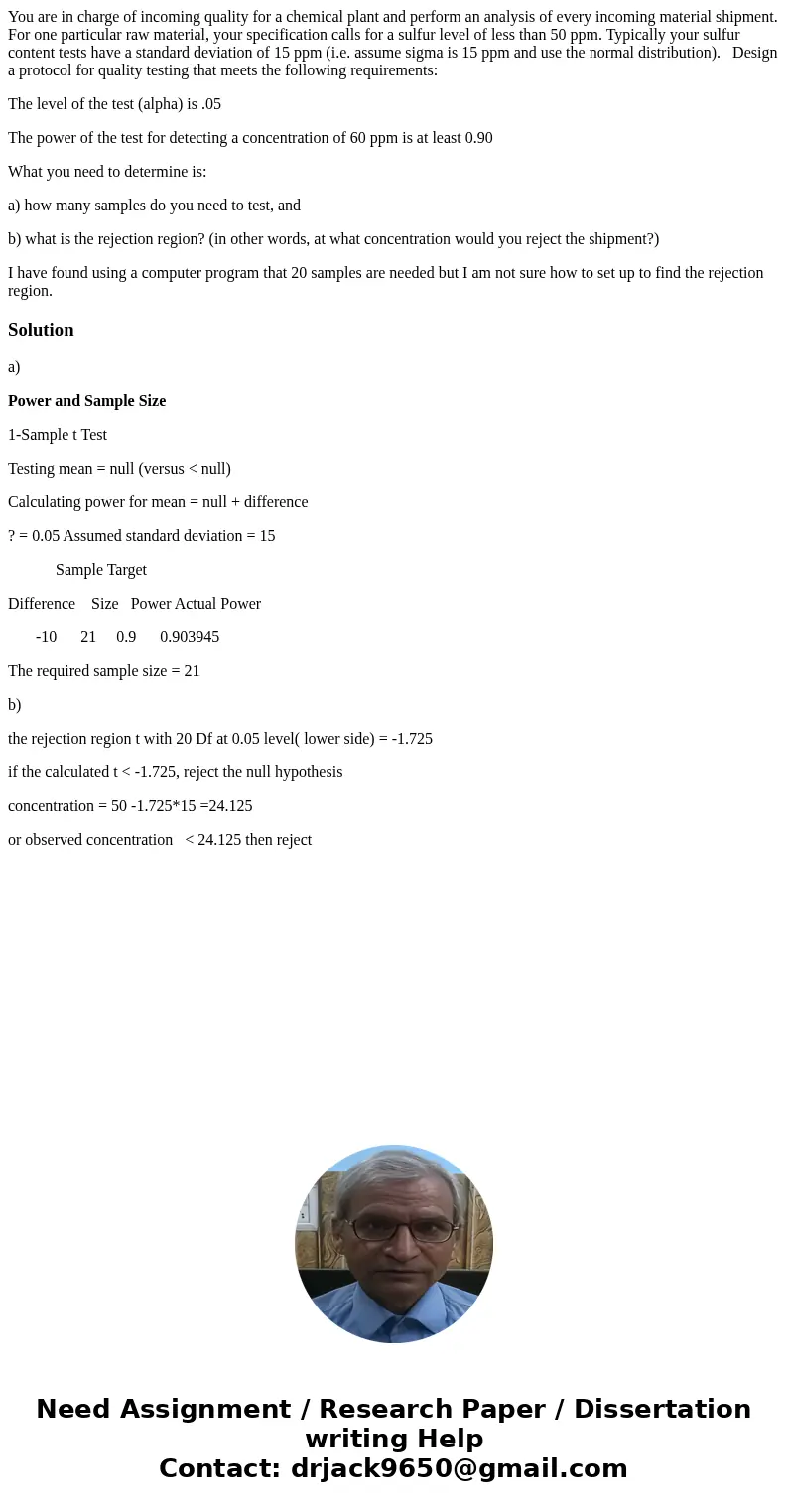You are in charge of incoming quality for a chemical plant a
You are in charge of incoming quality for a chemical plant and perform an analysis of every incoming material shipment. For one particular raw material, your specification calls for a sulfur level of less than 50 ppm. Typically your sulfur content tests have a standard deviation of 15 ppm (i.e. assume sigma is 15 ppm and use the normal distribution). Design a protocol for quality testing that meets the following requirements:
The level of the test (alpha) is .05
The power of the test for detecting a concentration of 60 ppm is at least 0.90
What you need to determine is:
a) how many samples do you need to test, and
b) what is the rejection region? (in other words, at what concentration would you reject the shipment?)
I have found using a computer program that 20 samples are needed but I am not sure how to set up to find the rejection region.
Solution
a)
Power and Sample Size
1-Sample t Test
Testing mean = null (versus < null)
Calculating power for mean = null + difference
? = 0.05 Assumed standard deviation = 15
Sample Target
Difference Size Power Actual Power
-10 21 0.9 0.903945
The required sample size = 21
b)
the rejection region t with 20 Df at 0.05 level( lower side) = -1.725
if the calculated t < -1.725, reject the null hypothesis
concentration = 50 -1.725*15 =24.125
or observed concentration < 24.125 then reject

 Homework Sourse
Homework Sourse